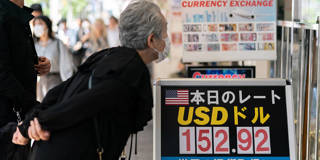The dollar's strength, particularly against major Asian currencies, has triggered a wave of skittishness in financial markets. Can anything be done to stem the greenback's rise, and even if something can be done, should it?
ISTANBUL – The dollar has strengthened sharply in recent months, against Asian currencies in particular. A rising crescendo of apocalyptic financial talk threatens to spook markets. The Japanese yen appears to be on the verge of collapse. China may feel compelled to devalue, with damaging consequences for itself and the global economy. So, can anything be done to head off the dollar’s strength, and even if something can be done, should it?

ISTANBUL – The dollar has strengthened sharply in recent months, against Asian currencies in particular. A rising crescendo of apocalyptic financial talk threatens to spook markets. The Japanese yen appears to be on the verge of collapse. China may feel compelled to devalue, with damaging consequences for itself and the global economy. So, can anything be done to head off the dollar’s strength, and even if something can be done, should it?